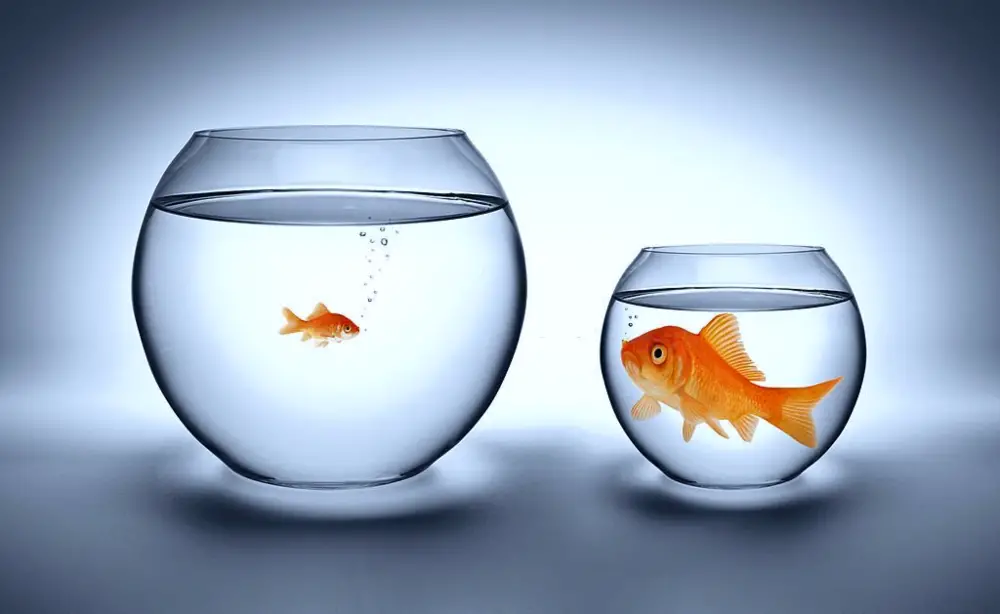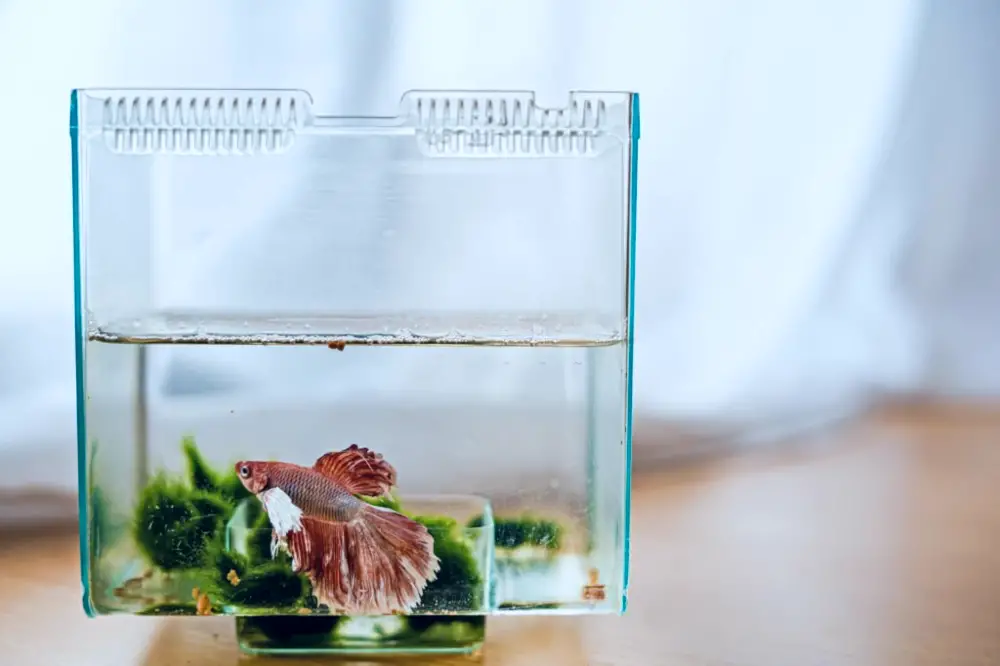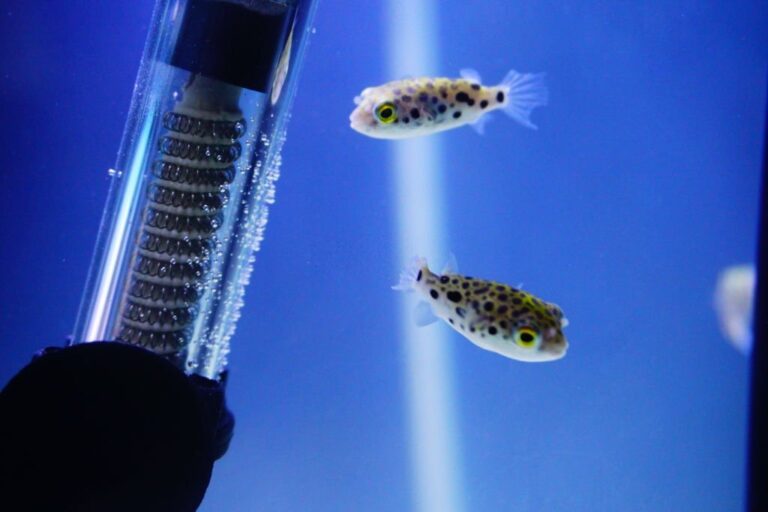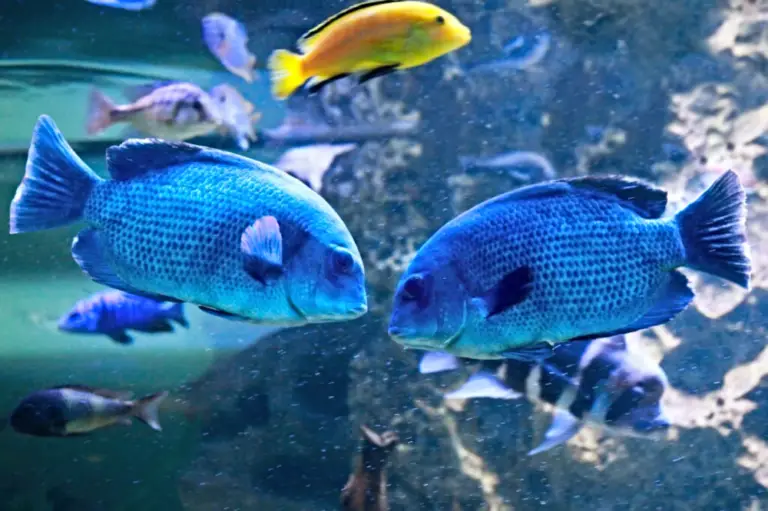Tank Talk — Choosing the Right Aquarium Size for You
As you embark on your fish-keeping journey, one decision stands as the foundation of your aquatic adventure: choosing the right aquarium size. This seemingly simple choice holds the key to the health and happiness of your underwater companions.
Imagine a home that’s too cramped, stifling, or cavernous – it’s not a place where you thrive, right? Fish feel the same way about their homes. In this blog, we’ll delve into essential aquarium size selection tips, serving as your comprehensive aquarium size guide. We’ll explore how different factors, from available space to fish compatibility, play a role in this critical decision.
So, dive in with us as we navigate the seas of fish tank size considerations, and discover how the perfect aquarium size can transform your fish-keeping experience into a harmonious aquatic haven.
Why Aquarium Size Matters
In fish-keeping, the size of your aquarium is a critical cornerstone of your aquatic world. Choosing the right aquarium size is a decision that reverberates throughout your entire fish-keeping experience, influencing everything from fish health to maintenance and overall enjoyment:
- Fish health: Imagine living in a space that’s too small to stretch or too vast to traverse comfortably. Fish, like any living creatures, need space that matches their size and behaviors. Cramped quarters can lead to stress, stunted growth, and even health issues. Conversely, excessively large tanks might make fish feel lost and exposed.
- Maintenance: The size of your tank directly affects the effort needed to maintain it. Larger aquariums generally demand more time and resources for cleaning, water changes, and filtration. Conversely, smaller tanks may require more frequent maintenance due to their limited water volume. Choosing an appropriate size ensures you can strike a manageable balance.
- Overall enjoyment: Think of your aquarium as a living work of art. The right size sets the stage for an immersive and enjoyable fish-keeping experience. An overcrowded tank may hinder your ability to appreciate your fish’s beauty and behavior. Conversely, a well-proportioned aquarium can be a captivating centerpiece, providing endless joy and tranquility.

Factors to Consider When Choosing Aquarium Size
It’s essential to weigh several key factors to ensure a harmonious and thriving aquatic environment. Here are the critical considerations that will guide you toward the perfect tank size.
Available Space
When you begin the journey of choosing the right aquarium size, the first crucial factor to consider is the available space in your home. Start by measuring the area where you intend to place your aquarium. This step is fundamental in determining the maximum dimensions your tank can have while fitting comfortably within your chosen location.
It’s important to note that available space may vary from room to room, so consider the dynamics of each space. Take into account factors like lighting conditions, temperature fluctuations, and foot traffic, as these elements can influence your choice of where to position your aquarium.
Intended Fish Species
Another pivotal factor in determining the ideal aquarium size is the specific fish species you plan to keep. Different fish species — like African cichlids, Arowanas, discus fish, and freshwater stingrays — have varying space requirements, and it’s essential to understand their needs. Research your intended fish thoroughly to gain insights into their adult size and activity levels.
Consider the compatibility of the fish species you wish to keep. Some species may exhibit territorial or aggressive behaviors, which can necessitate larger tanks to maintain peace among the inhabitants. Additionally, certain species, such as African cichlids, have specific water parameter requirements that can impact your tank’s size and setup.
Aquascaping and Aesthetics
The visual aspects of your aquarium can significantly influence its overall appeal. Aquarium size plays a pivotal role in determining the aesthetics of your underwater world. Larger tanks offer more space for creative aquascaping, allowing you to showcase a captivating underwater landscape — say hello to aquarium therapy.
However, smaller tanks can be equally stunning with the right design. While they may have limited space, they require more meticulous planning and arrangement of elements like rocks, driftwood, live plants, and substrate to create a visually pleasing environment. Consider your personal preferences and the level of commitment you’re willing to put into designing and maintaining your aquascape when making your choice.
Popular Aquarium Sizes and Their Pros and Cons
When it comes to choosing the right aquarium size, you’ll encounter a range of options, each with its own set of advantages and disadvantages. Let’s explore the most common aquarium sizes, from nano tanks to larger setups, to help you make an informed decision:
Nano Tanks (Under 10 Gallons)
Pros: Nano tanks are compact and fit well in small spaces. They’re often budget-friendly and require less maintenance. Ideal for beginners and those with limited space.
Cons: Limited space can restrict the types and number of fish you can keep. Water parameters can fluctuate more easily due to the small water volume.
Small Tanks (10-30 Gallons)
Pros: Small tanks offer more room for fish and aquascaping creativity. They strike a balance between space and maintenance.
Cons: Maintaining stable water parameters can be more challenging compared to larger tanks. Limited fish choices due to space constraints.
Medium Tanks (30-75 Gallons)
Pros: Medium-sized tanks provide versatility, accommodating a wide range of fish species and aquascaping options. Water parameters tend to be more stable.
Cons: Initial setup costs can be higher than smaller tanks. Maintenance is manageable but still requires attention.
Large Tanks (75 Gallons and Above)
Pros: Large tanks offer ample space for diverse fish communities and intricate aquascaping. Water parameters remain stable, and tank conditions are more forgiving.
Cons: Initial setup can be costly and space-intensive. Maintenance requires more time and resources due to the increased water volume.
Each aquarium size category has its unique advantages and challenges. Consider your available space, budget, and the time you can dedicate to maintenance when choosing the right aquarium size. Finding the balance between size and suitability for your fish-keeping goals is key to creating a thriving aquatic ecosystem.

Tips for Choosing the Right Aquarium Size
When it comes to choosing the right aquarium size, a little preparation can go a long way. Here are some valuable tips to help you make an informed decision.
Research and Planning
Thorough research is your best ally. Before you embark on your fish-keeping journey, invest some time in learning about the specific requirements of the fish species you’re interested in. This knowledge should include understanding their adult size, behavior, and compatibility with other species. Armed with this information, you’ll be better equipped to make informed decisions about the size of your aquarium.
With your research in hand, the next step is to create a comprehensive plan based on your findings. This plan should outline not only the size of your aquarium but also other critical aspects of your setup. Take into account factors like the availability of space in your home, your preferred aquascaping ideas, and your budget. This plan will serve as your roadmap, ensuring that you’re well-prepared to make the right choice.
Consulting with Experts
Another valuable tip when choosing the right aquarium size is seeking guidance from experienced aquarists or professionals. Don’t hesitate to reach out to individuals who have firsthand knowledge and experience in the world of fish-keeping. You can connect with these experienced fish-keepers — like KaveMan Aquatics — through online forums, social media groups, or by joining local fish-keeping clubs.
Visiting local fish stores is also an excellent way to tap into the expertise of knowledgeable staff. These professionals can assist you in making informed decisions regarding aquarium size. They’ll take into consideration your goals, the specific fish species you wish to keep, and your available space. This personalized guidance can be invaluable in ensuring that your aquarium is the perfect fit for your needs and the well-being of your aquatic companions.
Practical Considerations for Setup
When choosing the right aquarium size, practical considerations play a crucial role in ensuring a successful and enjoyable fish-keeping experience. Here are some key practical aspects to keep in mind.
Aquarium Stand and Placement
One of the first practical aspects to consider is the selection of an appropriate aquarium stand and placement. The importance of a sturdy stand cannot be overstated. Regardless of your aquarium’s size, it’s essential to have a stand that is not only capable of supporting the weight of your tank but also provides a level and stable surface. This not only ensures the safety of your setup but also prevents potential disasters such as tank breakage or leakage.
Additionally, when it comes to placement, choose a location that can accommodate the weight of your aquarium. Avoid placing it near high-traffic areas or in direct sunlight, as these factors can lead to temperature fluctuations and stress for your fish. Using a leveling tool during setup ensures that your tank sits perfectly flat, preventing stress on the glass and potential leaks.
Filtration and Equipment
The size of your tank significantly affects your choice of filtration and equipment. When choosing the right aquarium size, it’s essential to consider the impact on your equipment needs.
Larger tanks typically require more robust filtration and equipment to maintain water quality. Smaller tanks, on the other hand, may get by with simpler setups. Consider your tank size when choosing filters, heaters, and lighting. Overfiltration is often a good practice, as it helps maintain stable water conditions and ensures the well-being of your fish.
Research and select filtration systems that match your tank’s needs and capacity. For larger tanks, canister filters might be a suitable choice, while hang-on-back filters can work well for smaller setups. Tailor your equipment choices to your specific tank size and requirements.
Maintenance and Care
The size of your tank also plays a significant role in your maintenance and care routines. It’s crucial to understand how tank size influences these aspects when choosing the right aquarium size.
Larger tanks generally require less frequent water changes but can be more time-consuming when it comes to cleaning and aquascaping. Smaller tanks, on the other hand, need more frequent water changes but are generally quicker to maintain.
Regardless of your tank’s size, regular maintenance is vital for a healthy aquarium. Test water parameters regularly, monitor fish health, and perform maintenance tasks like cleaning filters and vacuuming substrate. Maintaining a consistent maintenance schedule will help ensure a healthy and thriving aquatic environment for your fish.

Crafting Your Perfect Aquarium
In this blog, we’ve unraveled the art of choosing the right aquarium size. The key takeaways include considering practical aspects like sturdy stands and equipment needs, exploring tank sizes from nano to large setups, weighing pros and cons, and reflecting on your unique space and fish species.For personalized guidance, KaveMan Aquatics offers 1-on-1 coaching. Dive into fish-keeping with confidence! Let your chosen aquarium size be the canvas for your underwater dreams. Happy fish-keeping!
-
Tank Talk — Choosing the Right Aquarium Size for You
Discover the art of choosing the right aquarium size in our guide. Explore fish tank size considerations for a thriving aquatic world. Perfect for beginners!







